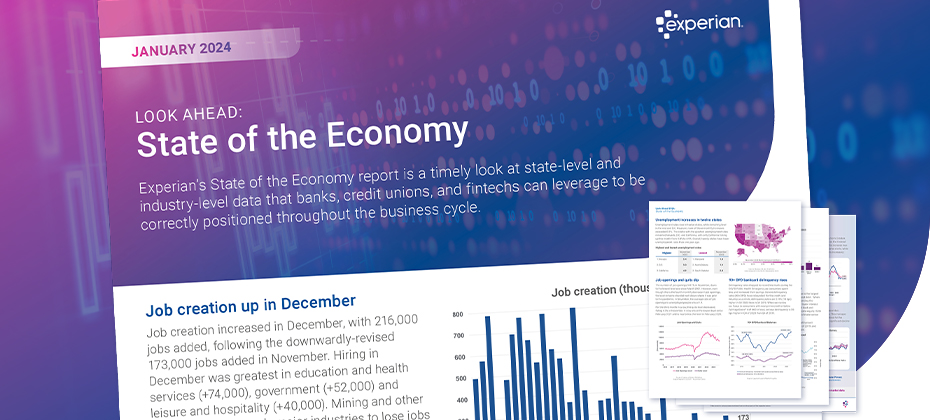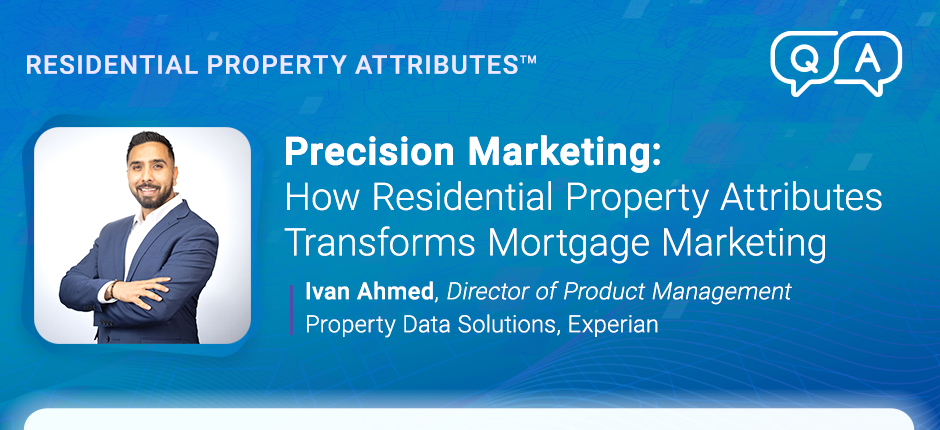Industries

This article was updated on January 30, 2024. Income verification is a critical step in determining a consumer’s ability to pay. The challenge is verifying income in a way that’s seamless for both lenders and consumers. While many businesses have already implemented automated solutions to streamline operations, some are still relying on manual processes built on older technology. Let’s take a closer look at the drawbacks of traditional verification processes and how Experian can help businesses deliver frictionless verification experiences. The drawbacks of traditional income verification Employment and income verification provides lenders with greater visibility into consumers’ financial stability. But it often results in high-touch, high-friction experiences when done manually. This can be frustrating for both lenders and potential borrowers: For lenders: Manual verification processes are extremely tedious and time-consuming for lenders as it requires physically collecting and reviewing documents. Additionally, without reliable income data, it can be difficult for lenders to accurately determine a consumer’s ability to pay, leading to higher origination risk. For borrowers: Today’s consumers have grown accustomed to digital experiences that are fast, simple, and convenient. A verification process that is slow and manual may cause consumers to drop off altogether. How can this process be optimized? To accelerate the verification process and gain a more complete view of consumers’ financial stability, lenders must look to automated solutions. With automated income verification, lenders obtain timely income reports to accurately verify consumers’ income in minutes rather than days or weeks. Not only does this allow lenders to approve more applicants quickly, but it also enables them to devote more time and resources toward improving their strategies and enhancing the customer experience. The right verification solution can also capture a wider variety of income scenarios. With the click of a button, consumers can give lenders permission to access their financial accounts, including checking, savings, 401k, and brokerage accounts. This creates a frictionless verification experience for consumers as their income information is quickly extracted and reviewed. Retrieving data directly from financial accounts also provides lenders with a fuller financial picture of consumers, including those with thin or no credit files. This helps increase the chances of approval for underserved communities and allows lenders to expand their customer base without taking on additional risk.1 Learn more 1 Experian Income Verification Product Sheet (2017).

This series will dive into our monthly State of the Economy report, providing a snapshot of the top monthly economic and credit data for those in financial services to proactively shape their business strategies. As 2024 unfolds, the economy is beginning to shift from last year’s trends. Instead of focusing on rate hikes, we’re looking at the potential for rate cuts. Our labor market is beginning to ease, and inflation is moving closer to the Federal Reserve’s 2% mark. Each month’s data gives us a clearer picture of our economic trajectory and the Federal Reserve’s (Fed) policy moving forward, as well as new and direct implications on credit metrics. Data highlights from this month’s report include: The U.S. economy added 216,000 jobs in December, but after November and October levels were revised, three-month average job creation now sits below the pre-pandemic level. While there was no change in November, annual core inflation, which excludes the volatile food and energy components, cooled in December from 4.0% to 3.9%. Consumer sentiment rose 14% in December, reversing the past four monthly declines, driven by increased optimism toward the trajectory of inflation. Check out our report for a deep dive into the rest of this month’s data, including student loans, consumer spending, the housing market, and delinquencies. To have a holistic view of our current environment, we must understand our economic past, present, and future. Keep an eye out for this year’s chartbook for a comprehensive view of the past year and download our latest forecast for a view of what’s to come. Download report View forecast For more economic trends and market insights, visit Experian Edge.

Online identity verification has become a basic necessity for everyday life. Consumers today might expect to upload a picture of their driver's license or answer security questions before creating a new account. And it's crucial to them — 63% say it's extremely or very important for businesses to be able to recognize them online. While many organizations have a consumer recognition strategy, moving from strategy to action and then getting the desired result isn't easy. That's particularly true when you're working to create seamless experiences for customers while fighting increasingly sophisticated fraudsters. Why is online identity verification challenging? Identity verification in the physical world might be as simple as checking a government-issued ID card — and perhaps an additional form of identification (or two) when the stakes are higher. Verification becomes more complicated as you move into the digital realm, especially when you need to automate decisions. There are many specific challenges to overcome, but some of the main ones fall into four categories. Finding the right friction: In an ideal world, every legitimate user will flow through your verification checks with ease. In reality, you may need to introduce some roadblocks to comply with know your customer (KYC) rules and prevent fraud. Finding the friction-right balance can be tricky. Accessing and using data: Using expanded data sources, such as behavior and device info, can improve outcomes without adding friction. But simply having more data isn’t the goal. You need to be able to organize, process and use the data in a compliant manner to quickly and accurately verify identities. Fighting fraud: You’re up against formidable foes who consistently test your systems for weaknesses and share the results with other fraudsters. You have to be able to spot first-party fraud, identity thieves and synthetic identities. Securing the data: Accessing and storing customer data is vital for a successful identity verification system, but it’s your responsibility to securely protect customers’ data. It also may be a legal requirement, and you need to be mindful of all the applicable regulations. These aren't fixed challenges that you can overcome in a single hurdle. Consumer preferences, fraud tactics and regulations are continually evolving, and your identity verification platform needs to keep up. Potential benefits throughout the customer lifecycle Companies that want to create, manage and continuously identify consumers are starting to take an enterprise-wide approach that relies on creating a single-customer view. The idea is to have a single identity that you can expand as you learn more about a person’s preferences and behavior. Otherwise, business units can wind up with fragmented views that lead to jumbled messaging, errors and missed opportunities. While it can be difficult to implement well, the single-view approach can also be powerful in action: Targeting and onboarding: Marketing, acquisition and onboarding aren’t necessarily handled by the same teams, but a smooth process can create a lasting good impression. There are also recent developments that can provide pre-fill capabilities with their identification verification solutions, which can create a nearly friction-free onboarding process. Prevent fraud: The single-view approach also lets you leverage cross-device and real-time data to detect and prevent fraud, and determine the right-size verification method. Using identity graphs to verify identities in real-time can also help you detect fraud, including account takeovers and first-party fraud. Customer experience: Consistently identifying customers can improve their experience — particularly when different departments can easily access and update the same identification material. In turn, this can lead to brand loyalty and the potential to upsell and cross-sell customers. The need for accurate verification is growing as people spend more time living and shopping online. Only 16% of consumers are confident businesses can consistently recognize them online, which also means there’s an opportunity to surprise and delight the skeptics. What do consumers want? Most people want to be recognized as they move throughout their digital lives. But data breaches and identity theft continuously make headlines, and people aren't ignorant of the dangers of sharing their personal information. In fact, consumers ranked identity theft (80%) as their top online security concern, a sizable +20% jump from the previous year. Finding the right balance of privacy, security and due diligence is important for earning customers' trust. However, the best approach to online identity verification may depend on who your customers are and how they interact with your products and services. Finding a great online identity verification partner Knowing how important online identity verification can be for the success of your business, you need to be sure that the digital identity solutions providers you partner with can meet your current and future needs. A good fit can: Give you access to multidimensional data: You can use online and offline data to support your digital identity verification systems. Some vendors can also help you use internal data,deterministic dataand outputs from probabilistic models to improve your results. Scale to meet future challenges: Many businesses are exploring how to use machine learning and artificial intelligencefor identity resolution and verification. These can be especially powerful when combined with robust data sources and may become more important as additional data sources come online. Protect your business: Identity verification solutions need to help you comply with the regulatory requirements and detect fraud with low false-positive rates to protect your business. First and foremost, you want to work with a partner who knows thatidentity is personal. Your customers are more than data points, and putting their needs and wants first will ultimately help you earn their trust and business. Learn more about Experian’s customer-centric identity verification solutions. Learn more

In today’s highly competitive landscape, credit card issuers face the challenge of optimizing portfolio profitability while also effectively managing their overall risk. Financial institutions successfully navigating the current market put more focus on proactively managing their credit limits. By appropriately assigning initial credit limits and actively overseeing current limits, these firms are improving profitability, reducing potential risk, and creating a better customer experience. But how do you get started with this important tool? Let’s explore how and why proactive credit limit management could impact your business. The importance of proactive credit limit management Enhanced profitability: Assigning the optimal credit limit that caters to a customer’s spending behavior while also considering their capacity to repay can stimulate increased credit card usage without taking on additional risk. This will generate higher transaction volumes, increase interest income, promote top-of-wallet use, and improve wallet share, all positively impacting the institution’s profitability. Mitigating risk exposure: A proactive review of the limits assigned within a credit card portfolio helps financial institutions assess their exposure to overextended credit usage or potential defaults. Knowing when to reduce a credit limit and assigning the right amount can help financial institutions mitigate their portfolio risk. Minimizing default rates: Accurately assigning the right credit limit reduces the likelihood of customers defaulting on payments. When an institution aligns their credit limits with a cardholder's financial capability, it reduces the probability of customers exceeding their spending capacity and defaulting on payments. Improving the customer experience: A regular review of a credit card portfolio can help financial institutions find opportunities to proactively increase credit limits. This reduces the need for a customer to call in and request a higher credit limit and can increase wallet share and customer loyalty. Strategies for effective credit limit management Utilizing advanced analytics: Leveraging machine learning models and mathematically optimized decision strategies allows financial institutions to better assess risk and determine the optimal limit assignment. By analyzing spending patterns, credit utilization, and repayment behavior, institutions can dynamically adjust credit limits to match evolving customer financial profiles. Regular review and adjustments: As part of portfolio risk management, implementing a system for a recurring review and adjustment of credit limits is crucial. It ensures that credit limits are still aligned with the customer's financial situation and spending habits, while also reducing the risk of default. Customization and flexibility: Personalized credit limits tailored to individual customer needs improve customer satisfaction and loyalty. Proactively increasing limits based on improved creditworthiness or income reassessment can foster stronger customer relationships. Protect profitability and control risk exposure Using the right data analytics, processing regular reviews, and customizing limits to individual customer needs helps reduce risk exposure while maximizing profitability. As the economic landscape evolves, institutions that prioritize proactive credit limit management will gain a competitive edge by fostering responsible customer spending behavior, minimizing default rates, and optimizing their bottom line. With Experian, automating your credit limit management process is easy Experian’s Ascend Intelligence ServicesTM Limit provides you with the optimal credit limits at the customer level to generate a higher share of plastic spend, reduce portfolio risk, and proactively meet customer expectations. Let us help automate your credit limit management process to better serve your customers and quickly respond to the volatile market. To find out more, please visit our website. Ready for a demo? Contact us now!

Financial institutions, merchants, and e-commerce platforms are no strangers to fraud, especially in the realm of payments. With the rise of digital currency, fraudsters are becoming more inventive, making it increasingly difficult to detect and prevent payment fraud. In this blog post, we discuss payment fraud and ways to protect your organization and your customers. What is payment fraud? Payment fraud occurs when someone uses false or stolen payment information to make a purchase or transaction. The most common types of payment fraud include: Phishing: Through emails or text messages, scammers disguise themselves as trustworthy sources to lure recipients into sharing their personal information, such as account passwords and credit card numbers. Card not present fraud: This type of fraud is one of the most challenging forms of payment fraud to detect and prevent. It occurs when a criminal uses a stolen or compromised credit card to make a purchase online, in-person, or by other means where the card is not physically present at the time of the transaction. Account takeover fraud: This type of fraud occurs when fraudsters gain unauthorized access to an individual’s account and carry out fraudulent transactions. They take over accounts by gathering and using personal or financial details to impersonate their victims. The rise of online payment fraud Online payments have become a prime destination for fraudsters as more consumers choose to store card details and make purchases digitally. As a result, consumers believe that it’s the responsibility of businesses to protect them online. If there’s a lack of trust and safety, consumers will have no problem switching providers, leading to declines in customer loyalty and monetary losses for organizations. No matter the type of payment fraud, it can result in devastating consequences for your organization and your customers. According to Experian’s 2024 U.S. Identity and Fraud Report, fraud scams and bank fraud schemes resulted in more than $458 billion in losses globally. On the consumer side, 52 million Americans had fraudulent charges on their credit or debit cards, with unauthorized purchases exceeding $5 billion. Given these findings, it’s more important than ever to implement robust online payment fraud detection and prevention measures. How can payment fraud be detected and prevented? Approaches to payment fraud detection and prevention have evolved over time. Some of the current and emerging trends include: Additional layers of security: Security measures like two-factor authentication, a CVV code, and a billing zip code can help verify a customer’s identity and make it more difficult for fraudsters to complete a transaction. Enhanced identity verification: A credit card owner verification solution, like Experian LinkTM, matches the customer identity with the credit card being presented for payment, allowing businesses to make better decisions, reduce false declines, and protect legitimate customers. Artificial intelligence (AI) and machine learning: AI-powered models and machine learning algorithms can identify patterns consistent with fraudulent activity in real time, resulting in proactive fraud prevention and reduced financial losses. Behavioral analytics: Using behavioral analytics to monitor user behavior, such as how they navigate a website or interact with the payment process, can help identify inconsistencies and potential fraud. Token-based authentication: Tokenization protects card information by replacing sensitive data with a unique identifier (token), which makes data breaches less damaging. How Experian can help As the payments landscape continues to evolve, so do fraudsters. Experian offers a wide range of payment fraud analytics, account takeover fraud prevention and fraud management solutions that allow you to better detect and prevent payment fraud. Your organization’s reputation and your customers’ trust shouldn’t be compromised. To learn more, visit us today. Learn more This article includes content created by an AI language model and is intended to provide general information.

It is a New Year and a new start. How about a new job? That is what thousands of employees will consider over the next month. It is also a time for employers to attract new talents, but they must be aware of different types of employment fraud. The rise of remote work has significantly increased the prevalence of remote hiring practices, from the initial job application to the onboarding process and beyond. Unfortunately, this shift has also opened the door to a surge in imposter employees, also known as ‘candidate fraud,’ posing a significant concern for organizations. How does employment identity theft happen? Instances of potential job candidates utilizing real-time deepfake video and deepfake audio, along with personally identifiable information (PII), during remote interviews to secure positions within American companies have been on the rise. The Federal Bureau of Investigation (FBI) reports that fraudulent individuals often acquire PII through fake job opening posts, which enable them to gather candidate information and resumes. Surprisingly, the tools necessary for impersonation on live video calls do not require sophisticated or expensive hardware or software. Employment identity theft can occur in several ways. Here are a few examples: Inaccurate credentials: Employers may inadvertently hire someone with false or stolen credentials if they fail to conduct comprehensive background checks. When the employer discovers the deception, it can be challenging to trace the true identity of the person they unknowingly hired. Limited-term job offers: Some industries offer temporary job opportunities in distant locations. Individuals with criminal backgrounds may steal victims' identities to apply for these jobs, hoping that their crimes will go unnoticed until after the job is complete. Perpetrated by colleagues: In rare instances, jealous colleagues or coworkers can commit employment identity theft. They may steal a coworker's information during a data breach and sell it on the dark web or use the victim's credentials to frame them for fraudulent workplace actions. Preventing employment identity theft In addition to the reported cases of imposter employee fraud, it is crucial to acknowledge the potential for other scams that exploit new technologies and the prevalence of remote work. Malicious cyber attackers could secure employment using stolen credentials, enabling them to gain unauthorized access to sensitive data or company systems. A proficient hacker possessing the necessary IT skills may find it relatively easy to leverage social engineering techniques during the hiring process. Consequently, the reliability of traditional methods for employee verification, such as face-to-face interactions and personal recognition, is diminishing in the face of remote work and the technological advancements that enable individuals to manipulate their appearance, voice, and identity. To mitigate risks associated with hiring imposters, it is imperative to incorporate robust measures into the recruitment process. Here are some key considerations: Establish clear policies and employment contracts: Clearly communicate your organization's policies regarding moonlighting in employment contracts, employee handbooks, or other official documents. Confidentiality and non-compete agreements: Implement confidentiality and non-compete agreements to protect your company's sensitive information and intellectual property. Monitoring: Automate employment and income verification of your employees. Provide training on cybersecurity best practices: Educate employees about cyber-attacks and identity scams, such as phishing scams, through seminars and workplace training sessions. Implement robust security measures: Use firewalls, encrypt sensitive employee information, and limit access to personal data. Minimize the number of employees who have access to this information. Thoroughly screen new employees: Verify the accuracy of Social Security numbers and other information during the hiring process. Conduct comprehensive background checks, including checking bank account information and credit reports and fight against synthetic identities. Offer identity theft protection as a benefit: Consider providing identity theft protection services to your employees as part of their benefits package. These services can detect and alert victims of potential identity theft, facilitating a fast response. The new era of remote work necessitates a fresh perspective on the hiring process. It is crucial to reevaluate HR practices and leverage AI fraud detection technologies to ensure that the individuals you hire, and employ are who they claim to be, guarding against the infiltration of imposters. Navigating employment fraud with effective solutions Employment fraud presents significant risks and challenges for employers, including conflicts of interest, reputation damage, and breaches of confidentiality. By taking the right preventative measures, you can safeguard your organization and employees. Streamlining the hiring process is essential to remain competitive. But how do you balance the need for speed and ease of use with essential ID checks? By combining the best data with our automated ID verification processes, Experian helps you protect your business and onboard new talents efficiently. Our best-in-class solutions employ device recognition, behavioral biometrics, machine learning and global fraud databases to spot and block suspicious activity before it becomes a problem. Learn more about preventing employement fraud *This article includes content created by an AI language model and is intended to provide general information.

In an era where record-breaking home prices and skyrocketing interest rates define the mortgage landscape, borrowers find themselves sidelined by prohibitive costs. With the purchase market at a standstill, mortgage lenders are grappling with how to sustain and grow their businesses. Navigating these turbulent waters requires innovative solutions that address the current market dynamics and pave the way for a more resilient and adaptive future. Today, I’m sitting down with Ivan Ahmed, Director of Product Management for Experian’s Property Data solutions, to learn more about Experian’s Residential Property Attributes™, a new and exciting dataset that can significantly enhance mortgage marketing and mortgage lead generation strategies and drive business growth for lenders, particularly during these challenging times. Question 1: Ivan, can you provide a brief overview of Residential Property Attributes and its relevance in today’s mortgage lending landscape? Answer 1: Absolutely. Residential Property Attributes is our latest product innovation designed to revolutionize how mortgage lenders approach marketing and growth decisions. It’s a robust dataset containing nearly 300 attributes that seamlessly integrates borrower property and tradeline information, providing a more holistic view of a borrower’s financial situation. This powerful dataset empowers lenders to make well-informed, impactful marketing decisions by refining campaign segmentation and targeting. Our attributes group into five categories: Question 2: As a data-focused company, we frequently discuss the importance of leveraging data and analytics to enhance marketing performance with clients. Considering other data providers that offer property data analytics or credit behavior data, what makes our capabilities distinct? Answer 2: The defining feature of Residential Property Attributes is its integration with borrower tradeline data. Many lenders today focus primarily on credit behavior, but we consider property data analytics, a critical aspect, equally important. By merging these two components, we present lenders with a thorough and accurate understanding of their target borrowers. This combination is revolutionary for marketing leaders looking to boost campaign performance and return on investment (ROI). Consider this scenario: On paper, two borrowers may seem homogenous, with similar credit scores, payment histories, and debt-to-income ratios. However, when you incorporate property-level insights, a striking disparity in their overall financial situations emerges. This level of insight prevents possible misdirection in marketing efforts. Question 3: Could you share more about the practical benefits of Residential Property Attributes, especially regarding enhancing marketing performance? Answer 3: Residential Property Attributes is instrumental in amplifying performance. It enables precise audience segmentation, allowing lenders to tailor marketing campaigns to address specific borrower needs. Here are a few examples: Lenders can identify borrowers with over $100k in tappable equity and high-interest personal loans and credit card debt. These borrowers are ideal for a cash-out refinance campaign aimed at debt consolidation. They can use a similar approach for Home Equity Line of Credit (HELOC) or Reverse Mortgage campaigns. Another instance is the utilization of property listings data. This identifies borrowers who are actively selling their properties and may need a new mortgage loan. This insight, coupled with credit-based 'in the market' propensity scores, enables lenders to pinpoint highly motivated borrowers. Such personalization improves engagement and enhances the borrower experience. The result is a marketing campaign that resonates with the audience, thus yielding higher response rates and conversions. The integrated view provided by Residential Property Attributes is the secret ingredient enabling lenders to maximize ROI by optimizing their marketing journey at every step. Taking action As we traverse today's complex mortgage landscape, it's clear that conventional methods fall short. As we face unprecedented challenges, adopting a holistic view of borrowers via Residential Property Attributes is not an option but a necessity. It's more than a tool; it's a compass guiding lenders towards more informed, resilient, and successful futures in the ever-changing world of mortgage lending. Learn more about Residential Property Attributes

Meeting Know Your Customer (KYC) regulations and staying compliant is paramount to running your business with ensured confidence in who your customers are, the level of risk they pose, and maintained customer trust. What is KYC?KYC is the mandatory process to identify and verify the identity of clients of financial institutions, as required by the Financial Conduct Authority (FCA). KYC services go beyond simply standing up a customer identification program (CIP), though that is a key component. It involves fraud risk assessments in new and existing customer accounts. Financial institutions are required to incorporate risk-based procedures to monitor customer transactions and detect potential financial crimes or fraud risk. KYC policies help determine when suspicious activity reports (SAR) must be filed with the Department of Treasury’s FinCEN organization. According to the Federal Financial Institutions Examinations Council (FFIEC), a comprehensive KYC program should include:• Customer Identification Program (CIP): Identifies processes for verifying identities and establishing a reasonable belief that the identity is valid.• Customer due diligence: Verifying customer identities and assessing the associated risk of doing business.• Enhanced customer due diligence: Significant and comprehensive review of high-risk or high transactions and implementation of a suspicious activity-monitoring system to reduce risk to the institution. The following organizations have KYC oversight: Federal Financial Institutions Examinations Council (FFIEC), Federal Reserve Board, Federal Deposit Insurance Corporation (FDIC), national Credit Union Administration (NCUA), Office of the Comptroller of the Currency (OCC) and the Consumer Financial Protection Bureau (CFPB). How to get started on building your Know Your Customer checklist 1. Define your Customer Identification Program (CIP) The CIP outlines the process for gathering necessary information about your customers. To start building your KYC checklist, you need to define your CIP procedure. This may include the documentation you require from customers, the sources of information you may use for verification and the procedures for customer due diligence. Your CIP procedure should align with your organization’s risk appetite and be comply with regulations such as the Patriot Act or Anti-money laundering laws. 2. Identify the customer's information Identifying the information you need to gather on your customer is key in building an effective KYC checklist. Typically, this can include their first and last name, date of birth, address, phone number, email address, Social Security Number or any government-issued identification number. When gathering sensitive information, ensure that you have privacy and security controls such as encryption, and that customer data is not shared with unauthorized personnel. 3. Determine the verification method There are various methods to verify a customer's identity. Some common identity verification methods include document verification, facial recognition, voice recognition, knowledge-based authentication, biometrics or database checks. When selecting an identity verification method, consider the accuracy, speed, cost and reliability. Choose a provider that is highly secure and offers compliance with current regulations. 4. Review your checklist regularly Your KYC checklist is not a one and done process. Instead, it’s an ongoing process that requires periodic review, updates and testing. You need to periodically review your checklist to ensure your processes are up to date with the latest regulations and your business needs. Reviewing your checklist will help your business to identify gaps or outdated practices in your KYC process. Make changes as needed and keep management informed of any changes. 5. Final stage: quality control As a final step, you should perform a quality control assessment of the processes you’ve incorporated to ensure they’ve been carried out effectively. This includes checking if all necessary customer information has been collected, whether the right identity verification method was implemented, if your checklist matches your CIP and whether the results were recorded correctly. KYC is a vital process for your organization in today's digital age. Building an effective KYC checklist is essential to ensure compliance with regulations and mitigate risk factors associated with fraudulent activities. Building a solid checklist requires a clear understanding of your business needs, a comprehensive definition of your CIP, selection of the right verification method, and periodic reviews to ensure that the process is up to date. Remember, your customers' trust and privacy are at stake, so iensuring that your security processes and your KYC checklist are in place is essential. By following these guidelines, you can create a well-designed KYC checklist that reduces risk and satisfies your regulatory needs. Taking the next step Experian offers identity verification solutions as well as fully integrated, digital identity and fraud platforms. Experian’s CrossCore & Precise ID offering enables financial institutions to connect, access and orchestrate decisions that leverage multiple data sources and services. By combining risk-based authentication, identity proofing and fraud detection into a single, cloud-based platform with flexible orchestration and advanced analytics, Precise ID provides flexibility and solves for some of financial institutions’ biggest business challenges, including identity and fraud as it relates to digital onboarding and account take over; transaction monitoring and KYC/AML compliance and more, without adding undue friction. Learn more *This article includes content created by an AI language model and is intended to provide general information.

According to Experian’s Automotive Consumer Trends Report: Q3 2023, CUVs accounted for 48.3% of new retail registrations and SUVs comprised 13.0%.

As vehicle inventory continues to restore post-pandemic, data through the third quarter of 2023 showed new vehicle registrations are on the rise again—a positive sign that the market is leveling out. According to Experian’s Automotive Market Trends Report: Q3 2023, new vehicle registrations increased 12.7% year-over-year, reaching 11.5 million. On the used side, registrations declined to 29.3 million through Q3 2023, a 2% decrease from 29.9 million last year. Digging a bit deeper, CUVs/SUVs were the most registered new vehicle segment at 56.9%, up from 56.2% compared to last year. Pickup trucks declined from 18.6% to 17.4% year-over-year and sedans went from 17.1% to 16.8% in the same time frame. While knowing what types of vehicles consumers are interested in is beneficial for automotive professionals, breaking down the most sought-after models will paint a fuller picture as they assist shoppers in finding a vehicle that fits their needs. For instance, despite new pickup truck registrations declining year-over-year, the Ford F-150 made up the highest share of new vehicle registrations through Q3 2023—reaching 3%. The Tesla Model Y and Toyota RAV4 were not far behind, both coming in at 2.5% this quarter. They were followed by the Chevrolet Silverado 1500 and Honda CR-V tying at 2.3%. ICE vehicles continue to grow Taking a deeper dive into the fuel type share, ICE vehicles continue to grow year-over-year, even with electric vehicles (EVs) making headway into the market. Experian Automotive’s Vehicles in Operation (VIO) data as of Q3 2023 shows ICE vehicle registrations grew to 265.7 million, up from 264.5 million last year, while hybrid vehicles increased to 8.0 million, from 6.9 million in the same time frame. Meanwhile, EVs went from 2.0 million last year to 3.0 million this year and diesel saw a slight uptick from 9.6 million to 9.9 million in the same period. Leveraging different data points and staying up to date on vehicle registration trends can better prepare professionals as the market remains ever-changing and consumer preference continues to shift. To learn more about vehicle market trends, view the full Automotive Market Trends Report: Q3 2023 presentation on demand.

The online gaming industry has experienced tremendous growth in recent years, with millions of players engaging in immersive virtual worlds and competitive gameplay. Unfortunately, this surge in popularity has also sparked an increase in online gaming fraud. Unscrupulous individuals have sought to exploit the industry through fraudulent activities, leading to financial losses and reputational damage for gaming vendors.According to a recent study conducted by Lloyds Bank, children are spending more time playing online games than ever before – over five million children between the ages of three and 15 are now regularly playing games online, up from approximately 4.6 million in 2019.Fraudsters, always ready to take advantage of opportunities presented by new trends, are now increasingly targeting this rising demographic. Gaming vendors have a responsibility to shield minors from fraud in online gaming by implementing robust safety measures, educating young players and their parents, and actively monitoring and addressing fraudulent activities. A vulnerable target That same study from Lloyds revealed that over a third (36%) of parents are concerned about the possibility of their children falling victim to gaming fraud and losing money. In today's tech-savvy world, the ease of payment authorization has only exacerbated these concerns. All it takes for a child to make a payment is to key in their parents' online store username and password. It is a practice fraught with danger. Parents can only do so much to safeguard their children while gaming, and despite their best efforts, there will always remain a lingering possibility of encountering scammers. Gaming vendors should establish robust age verification processes during account creation to ensure that minors are not exposed to age-inappropriate content. Additionally, they should incorporate comprehensive parental controls that allow parents to regulate their children's online activities, including chat limitations, spending controls, and access to certain features.But contrary to common assumptions, the gaming population is not restricted to teenagers or young adults. With an average age of 35, gamers have significant purchasing power and actively participate in the gaming ecosystem. They spend an average of over six hours per week gaming, dedicating nearly an hour each day to their preferred gaming experiences. This engagement is spread across all age groups and financial profiles, making the gaming community a vast market to attract cybercrime. Types of fraud in online gaming In 2022, the revenue from the worldwide gaming market was estimated at almost 347 billion U.S. dollars, with the mobile gaming market generating an estimated 248 billion U.S. dollars of the total. The gaming market is constantly evolving, and technological advancements are opening new possibilities for game developers to create more immersive and engaging experiences.But alarming reports indicate that scammers have honed in on the younger demographic of gamers, leveraging their innocence to exploit their finances and identities. Identity theft (67%) and hacking (61%) rank as the two most prevalent forms of fraud experienced by young gamers, according to the Lloyds Bank study. Here are some different types of online gaming fraud: Account hacking: Hackers employ various techniques like phishing, keylogging, and credential stuffing to gain unauthorized access to players' accounts. Once compromised, accounts could be used for fraudulent activities, including unauthorized in-game transactions or selling virtual assets for real money. Chargeback fraud: This occurs when players make legitimate purchases within a game using real money and then issue chargebacks, falsely claiming that the transaction was unauthorized or fraudulent. This results in financial losses for gaming vendors as they lose the revenue and virtual goods/services provided to the player. Virtual asset fraud: Virtual assets, such as in-game currency, items, or characters, hold economic value. Fraudsters engage in scams involving fake virtual asset transactions or market manipulation, exploiting players' desires to acquire rare or high-value items. Match-fixing and cheating: Competitive gaming is at the heart of many online games. Fraudsters seek to manipulate matches, exploit glitches, or use cheat software to gain an unfair advantage over others. This undermines the integrity of the gaming experience and discourages fair competition. The game changer for online platforms: fraud prevention strategies Given the anticipated growth of these threats in the foreseeable future, it is imperative that online platforms prioritize the protection of young gamers and their parents. In line with the enhanced safeguards and anti-fraud initiatives observed in banks and financial institutions, it is high time for game companies to elevate their security and consumer protection measures by adopting the following guidelines: Implement strong account security measures: Encourage players to create unique, complex passwords, and consider implementing multifactor authentication solutions. Regularly educate players about common hacking techniques and promote safe browsing habits to prevent phishing attempts. Utilize fraud detection systems: Invest in advanced fraud detection tools that employ machine learning algorithms and biometrics templates to identify suspicious activities and patterns. These systems can flag potentially fraudulent transactions, allowing you to take appropriate measures promptly. Monitor and analyze user behavior: Keep an eye on players' activities and digital identity, such as unusual login patterns, high-value transactions, or frequent chargebacks. Analyze gameplay data, interactions, and purchasing behavior to identify patterns indicative of fraud or cheating. Secure payment processing systems: Choose reputable payment gateways that prioritize security measures. Employ tokenization and encryption technologies to safeguard players' payment information during transactions. Regularly test and update your payment system's security infrastructure. Raise player awareness: Educate your player community about common fraud techniques and the importance of securing their accounts with identity authentication. Share security tips through newsletters, blog posts, and in-game messaging. Foster a culture of vigilance and encourage players to report any suspicious activities. Foster fair gameplay and zero tolerance policy: Implement robust anti-cheat measures and regularly update your game to address vulnerabilities and exploits. Promote fair competition and enforce a zero-tolerance policy against cheating, match-fixing, and other forms of unfair gameplay. Leveling-up Ultimately, the ability to protect players online could be the ultimate gamechanger for gaming platforms. By embracing identity verification mechanisms that rely on secure and privacy-centric facial recognition, online fraud and identity theft can be significantly curtailed. Moreover, the verification and onboarding processes can be streamlined, simplifying the user experience further. Just as bringing top-tier games on board is crucial, game platforms must ensure their customers engage in a secure gaming environment. Streamlining the onboarding and sign-in process is essential to remain competitive. But how do you balance the need for speed and ease of use with essential ID checks? By combining the best data with our automated ID verification checks, Experian helps you safeguard your business and onboard customers efficiently. Using passive, invisible checks when customers sign into their accounts helps to keep fraudsters at bay and protects legitimate players without the need for irritating security challenges. Experian’s best-in-class solutions employ device recognition, behavioral biometrics, machine learning and global fraud databases to spot and block suspicious activity before it becomes a problem. Learn more *This article leverages/includes content created by an AI language model and is intended to provide general information.

Vehicles with recalls are on the road. In fact, as of July 2023, there were over 15M vehicles on the road in the United States that have a recall that was reported for that vehicle between January and June 2023². Awareness of Open Recalls and the availability of remedies is important for our Automotive clients. As a result, we have added the National Highway Transportation Safety Administration (NHTSA) number and remedy availability flag to three of our Vehicle History Data Solutions: AutoCheck Vehicle History Report Dealers and consumers will be aware of open recalls and if there is a remedy available for the recall. This can alleviate consumer concern over an open recall if there is no remedy available facilitating consumer confidence in a vehicle purchase. AutoCheck Triggers Clients will be aware of any open recalls and the remedy viability in their vehicle portfolio. Many clients use AutoCheck Triggers to make business decisions regarding their vehicle portfolio. Auto AccuSelect Adding the NHTSA recall number and remedy availability flag to Auto AccuSelect allows clients to be aware and take action regarding the vehicles they are evaluating. It is critical to know open recall information, as well as the overall history of a vehicle before buying or selling a used car. Experian Automotive’s vehicle history data solutions, such as a the AutoCheck vehicle history report, can help you buy and sell vehicles with confidence. AutoCheck has 98.96% of manufacturer coverage for recall data based on vehicles in operation. If you’d like to learn more about a recent analysis Experian Automotive conducted about the number of recalls reported for the first half of 2023, where those events were reported and where those vehicles are currently in operation, click to view our Recall Insights Infographic.

While today’s consumers expect a smooth, frictionless digital experience, many financial institutions still rely on outdated technology and manual reviews to acquire new customers. These old processes can prevent lenders from making accurate and timely credit decisions, leading to lost opportunities, revenue, and goodwill. By optimizing their customer acquisition strategies, financial institutions can allocate their resources effectively and say yes to consumers faster. This guide will walk you through the current challenges facing customer acquisition and how robust optimization strategies can help. Current challenges in customer acquisition To stay competitive and engage high-value customers, you’ll need an efficient customer acquisition process that weeds out both fraudulent actors and risky consumers. However, achieving this balancing act comes with a unique set of challenges. Because today’s consumers can access goods and services almost anywhere online at any time, more than 54 percent of customers expect a heightened digital and frictionless experience. Failing to meet this expectation can lead to huge losses for lenders. Some of the most common challenges in customer acquisition include: Although 52 percent of consumers prefer digital banking options over visiting branches in person, many lenders still rely on paper documents, which can add weeks to the onboarding process. Requiring consumers to provide substantial information about themselves during an application process can lead to abandoned applications. 67 percent of consumers will leave an application if they experience complications. Verifying consumer identities is growing increasingly important. In fact, about 35 percent of customers drop out of digital onboarding because their identity can't be confirmed. Poorly defined campaign planning can cause businesses to market to the wrong population segments, resulting in wasted time and resources. What is optimization for customer acquisition? Customer acquisition optimization is the process of implementing new methods and solutions to make acquiring new customers more efficient and cost-effective. For lenders, this means streamlining steps in the credit decisioning process to focus on the right prospects and reduce friction. What types of processes can be optimized for customer acquisition? You might be surprised just how many processes can be optimized for customer acquisition. Here are just a few examples: Having a holistic view of consumers allows you to take the guesswork out of targeting so you can better identify and engage high-potential customers. Utilizing predictive and lifestyle data enables you to pinpoint a more precisely segmented audience for marketing. Digital application solutions that reach across multiple channels, allowing applicants to leave one channel and pick up right where they left off in another. Real-time identity verification and fraud detection during onboarding and after, helping expedite approvals and mitigate risks. Utilizing API integration to leverage multiple metrics beyond credit scores when screening applicants' financial situation. Building custom risk models that pair to your existing data so you can say yes to more customers and better manage portfolio risk. Benefits of customer acquisition optimization Optimization can bring numerous benefits to your business, providing a faster return on investment. Here are some examples. By better pinpointing your marketing through predictive and lifestyle data, you can achieve increased conversions. Faster onboarding with less friction helps retain more customers. Real-time fraud detection and identity verification reduce customer roadblocks, allowing you to realize significant growth. Custom risk models and decisioning platforms can pair your data with additional data elements, providing more than just a credit score rating for your applicants. This can help you say yes to more customers. Using AI and machine learning tools will reduce the need for manual reviews and thus increase booking rates and applications. A real-life example of these benefits can be found with the Michigan State University Federal Credit Union (MSUFCU.) With over $7.2 billion in assets and 330,000 members, the client was manually reviewing all its applications. Experian reviewed the client's risk levels and approvals, comparing their risk and bankruptcy scores to determine which were most predictive. This analysis led Experian to recommend a new decisioning platform (PowerCurve Originations®) for instant credit decisions, an alternative data score tool, and Experian Advisory Services for risk-based pricing. After implementing these optimization solutions, MSUFCU saw a 55 percent increase in average monthly automations, four times improved online application response time and began competing more effectively in the marketplace. How Experian can help Experian offers a number of customer acquisition tools, allowing companies to be more responsive in an increasingly competitive market, while still reducing fraud risk. These tools include: Acquisition optimization marketing Experian offers a web-based platform that lets clients manage their marketing efforts all in the same place. You can upload and enhance client files, identify lookalike prospects, and use firmographic and credit data to get a holistic view of your clients and your prospects. Data-driven acquisition and decisioning engine PowerCurve Originations® is a data-driven decisioning engine that accepts applications from multiple channels, automates data collection and verification and proactively monitors decision results. It's flexible enough to reach across multiple channels, letting customers set aside their application in one digital channel and resume where they left off in another. It also provides businesses with access to comprehensive data assets, proactive monitoring and streamlined development with minimal coding. Enhanced fraud detection and identity verification Experian's Precise ID® is a risk-based fraud detection and prevention platform that provides analytics to accurately verify customers and mitigate fraud loss behind the scenes, ensuring a smoother onboarding process. Robust consumer attributes for better customized models Experian gives clients access to a wider berth of consumer attributes, helping you better screen applicants beyond just looking at credit scores. Trended 3DTM attributes let you uncover unique patterns in consumers' behavior over time, allowing you to manage portfolio risk, build better models and determine the next best actions. Premier AttributesSM aggregates credit data at the most granular and meaningful levels to provide clear insights into consumer credit behavior. It encompasses more than 2,100 attributes across 51 industries to help you develop highly predictive custom models. Enterprise-wide credit decisioning engine Experian's enterprise-wide credit decision platform lets you combine machine learning with proprietary data to return optimized decisions and quickly respond to requests. Robust credit decisioning software lets you convert data into meaningful actions and strategies. With Experian's machine learning decisioning options, companies are realizing a 25 percent reduction in manual reviews, a 25 percent increase in loan and credit applications and a 26 percent increase in booking rates. Highly predictive custom models Experian's Ascend Intelligence ServicesTM can help you create highly predictive custom models that create sophisticated decisioning strategies, allowing you to accurately predict risk and make the best decisions fast. This end-to-end suite of solutions lets you achieve a more granular view of every application and grow portfolios while still minimizing risk. Experian can help optimize your customer acquisition Experian provides a suite of decisioning engines, consumer attributes and customized modeling to help you optimize your customer acquisition process. These tools allow businesses to better target their marketing efforts, streamline their onboarding with less friction and improve their fraud detection and mitigation efforts. The combination can deliver a powerful ROI. Learn more about Experian's customer acquisition solutions. Learn more

Fraud is a serious concern for everyone, including businesses and individuals. In fact, according to our 2023 U.S. Identity and Fraud Report, nearly two-thirds (64%) of consumers are very or somewhat concerned with online security, and over 50% of businesses have a high level of concern about fraud risk. The fraud landscape is constantly evolving, and staying vigilant against the latest trends is critical to safeguarding your organization and consumers. As we reflect on 2023, let’s look at the top fraud trends and their continued potential impact on your business. The evolution of new fraud trends When economic uncertainty reigns, a rise in fraud often follows. To begin with, consumers tend to be financially stressed in such periods and prone to making risky decisions. In addition, fraudsters are keenly aware of the opportunities inherent in unstable times and develop tactics to take advantage of them. For example, as consumers rein in spending and financial institutions struggle to maintain new account volumes, fraudsters might ramp up their new account and loan activities. Fraud is becoming more sophisticated. For instance, thanks to the rapid rise in the availability of artificial intelligence (AI) tools, fraudsters are increasingly able to impersonate companies and individuals with ease, as well as consolidate data from diverse sources and use it more efficiently. The most impactful fraud trends of 2023 The fraud trends that emerged in 2023 were diverse, though they all had one thing in common: fraudsters' keen ability to take advantage of new technologies and opportunities. And businesses are feeling the repercussions, with nearly 70% reporting that fraud losses have increased in recent years. Here are five trends we forecasted in the fraud and identity space that challenged fraud fighters on the front lines this year. Deposit and checking account fraud With everyone focused on fraud in the on-line channels, it is interesting that financial institutions reported more fraud occurring at brick-and-mortar locations. Preying on the good nature of helpful branch employees, criminals are taking risks by showing up in person to open accounts, pass bad deposits and try to work their way into other financial products. The Treasury Department reports complaints doubling YoY, after increasing more than 150% between 2020 and 2021. Synthetic identity fraud Not quite fake, not quite real, so-called synthetic or "Frankenstein" identities mash up real data with false information to create unique customer profiles that can outsmart retailers' or financial institutions' fraud control systems. With synthetic identity (SID) fraud real data is often stolen or purchased on the dark web and combined with other information — even Artificial Intelligence (AI)-created faces — so that fraudsters can build up a synthetic identity's credit score before taking advantage of them to borrow and spend money that will never be paid back. One major risk? As fraud rates rise due to the use of tactics like synthetic identities, it could become more challenging and expensive to access credit. Fake job postings and mule schemes Well-paying remote work was in high demand this year, creating opportunities for fraudsters to create fake jobs to harvest data such as Social Security numbers from unsuspecting applicants. Experian also predicts a continued rise in "mule" jobs, in which workers unknowingly sign on to do illegal work, such as re-shipping stolen goods. According to the Better Business Bureau, an estimated 14 million people get caught in a fake employment scam yearly. Job seekers can protect themselves by being skeptical of jobs that ask them to do work that appears suspicious, requires money, financial details, or personal information upfront. Peer-to-peer payment fraud Peer-to-peer payment tools are increasingly popular with consumers and fraudsters, who appreciate that they're both instant and irreversible. Experian expects to continue to see an increase in fraudulent activity on these payment systems, as fraudsters use social engineering techniques to deceive consumers into paying for nonexistent merchandise or even sharing access credentials. Stay safe while using peer-to-peer payment tools by avoiding common scams like requests to return accidental payments, opting for payment protection whenever possible and choosing other transaction methods like paying with a credit card. Social media shopping fraud Social media platforms are eager to make in-app shopping fun and friction-free for consumers — and many brands and shoppers are keen to get on board. In fact, approximately 58% of users in the U.S. have purchased a product after seeing it on social media. Unfortunately, these tools neglect effective identity resolution and fraud prevention, leaving sellers vulnerable to fraudulent purchases. And while buyers have some recourse when a purchase turns out to be a scam, it's wise to be cautious while shopping on social media platforms by researching sellers, only using credit cards and being cognizant of common scams, like when vendors on Facebook Marketplace ask for payment upfront. Employer text fraud Fraudulent text messages — also known as “smishing,” a mash-up of Short Messaging Service (SMS) and phishing — continues to rise. In fact, according to data security company Lookout, 2022 was the biggest year ever for such mobile phishing attacks, with more than 30 percent of personal and enterprise mobile phone users exposed every quarter. One modern example of these types of schemes? Expect to continue to see a rise in gift card fraud targeting companies. For example, an employee might receive a text from their "boss" asking them to purchase gift cards and relay the numbers. The fraudsters get to shop, and the company is left with the bill. Why fraud prevention and detection solutions matter Nearly two-thirds of consumers say they are "very" or "somewhat concerned" with online security, and more than 85 percent expect businesses to respond to their identity and fraud concerns. Addressing and preventing fraud — and communicating these fraud-prevention actions to customers — is an essential strategy for businesses that want to maintain customer trust, thereby decreasing churn and maximizing conversions on new leads. There's a financial imperative to address fraud as well. Businesses stand to lose a great deal of money without adequate fraud prevention strategies. Account takeover fraud, for example, is an increasing threat to financial institutions, which saw a 90 percent increase in account takeover losses from 2020 to 2021. By making account takeover fraud prevention a priority, financial institutions can alleviate risks and prevent major losses. How to build an effective fraud strategy in 2024 In 2024, fraud management solutions must be even more technically advanced than the fraudulent techniques they're combating. But more than that, they need to be appealing to consumers, who are likely to abandon signup or purchase attempts when they become too onerous. In fact, 37% of consumers have moved their business elsewhere due to a negative account opening experience. Worryingly for businesses, this number was even higher among high-income households and those aged 25 to 39. To succeed, effective fraud strategies must be seamless, low friction, data-driven and customer-focused. That means making use of up-to-date technologies that boost security while prioritizing a positive customer experience. Concerned about fraud? Let Experian help As we look back at the top fraud trends of 2023, it's clear that scammers are becoming increasingly sophisticated in their methods. Fraud can create huge risks for your business — but there are ways to act. Experian's suite of fraud prevention and identity verification tools can help you detect and combat fraud. Find out more about Experian's fraud risk management strategies and how they can help keep you and your customers safe. Learn more

Financial institutions are under increasing pressure to grow deposits and onboard more demand deposit accounts (DDA). But as demand increases, so do fraud attempts from scammers. While a robust mitigation effort is needed to stop fraud, this same effort can also drive away potential clients. In fact, 37 percent of U.S. adults said that they abandoned opening an account online due to experiencing friction. This leaves institutions in a unique quandary: how do they stop DDA fraud without scaring away potential clients? The answer lies in utilizing robust, machine learning tools that can help you navigate fraud attempts without increasing onboarding friction. Chris Ryan, Go to Market Lead for Experian Identity and Fraud, shares his thoughts on demand deposit account fraud and which decisioning tools can best combat it. Q: What is a demand deposit account and how is it used? "Demand deposit is just your basic checking account," Ryan explains." The funds are deposited and held by an institution, which enables you to spend those assets or resources, whether it be through checks, debit cards, person-to-person, Automated Clearing House (ACH) — all the things we do every day as consumers to manage our operating budget." Q: What is demand deposit account fraud? "There are two different ways that demand deposit account fraud works," Ryan says. "One is with existing account holders, and the other is with the account opening process.” When fraud affects existing account holders, it typically involves tricking an account holder into sending money to a scammer or using fraudulent actions, like phishing emails or credit card skimmers, to gain access to their accounts. There is also a resurgence in fraud involving duplication, theft and forgery of paper checks, Ryan explains. Fraud impacting the account opening process occurs when scammers originate new DDAs. This can work in a variety of ways, such as these three examples: A scammer steals your identity and opens an account at the same bank where you have a home equity loan. They link their DDA to your line of credit, transferring your money into their new account and withdrawing the funds. A scammer uses a synthetic identity (SID) to open a fraudulent DDA. They will then use this new DDA to open more lucrative accounts that the institution cross-sells to them. A scammer uses a stolen or SID to open “mule” accounts to receive funds they dupe consumers into sending through fake relationship schemes, bogus merchandise sales and dozens of similar scams. While both types of fraud need to be dealt with, account opening fraud can have especially large repercussions for lenders or financial institutions. Q: What are the consequences of DDA fraud for organizations? "Fraud hurts in a number of ways," Ryan explains. "There are direct losses, which is the money that criminals take from our financial system. Under most circumstances, the financial institution replaces the money, so the consumer doesn’t absorb the loss, but the money is still gone. That takes money away from lending, community engagement and other investments we want banks to make. The direct losses are what most people focus on." But there are even more repercussions for institutions beyond losing money, and this can include the attempts that institutions put into place to stop the fraud. "Preventing fraud requires some friction for the end consumer," Ryan says. "The volume of fraudulent attempts is overwhelmingly large in the DDA space. This forces institutions to apply more friction. The friction is costly, and it often drives would-be-customers away. The results include high costs for the institutions and low booking rates. At the same time, institutions are hungry for deposit money right now. So, it's kind of a perfect storm." Q: What is the impact of DDA fraud on customer experience? Experian’s 2023 Identity and Fraud Report revealed that up to 37 percent of U.S. adults in the survey had abandoned a new account entirely in the previous six months because of the friction they encountered during onboarding. And 51 percent reported considering abandoning the process because of problems they encountered. Unfortunately, fraud mitigation and deposit fraud detection efforts can end up driving customers away. "People can be impatient," Ryan says, "and in the online world, a competing product is a mouse-click away. So, while it is tempting to ask new applicants for more information, or further proof of identity, that conflicts with their need for convenience and can impact their experience.” Companies looking for cheap and fast mitigation can end up impeding customers trying to onboard to sweep out the bad actors, Ryan explains. "How do you get the bad people without interrupting the good people?" Ryan asks. "That's the million-dollar question." Q: What are some other problems with how organizations traditionally combat DDA fraud? Unfortunately, traditional attempts to combat DDA fraud are inefficient due to the fragmentation of technology. Ryan says this was revealed by Liminal, an industry analyst think tank. "Nearly half of institutions use four-or-more-point solutions to manage identity and fraud-related risk," Ryan explains. "But all of those point solutions were meant to work on their own. They weren't developed to work together. So, there's a lot of overlap. And in the case of fraud, there's a high likelihood that the multiple solutions are going to find the same fraud. So, you create a huge inefficiency." To solve this challenge, institutions need to shift to integrated identity platforms, such as Experian CrossCore®. Q: How is Experian trying to change the way organizations approach DDA fraud? Experian is pushing a paradigm shift for institutions that will increase fraud detection efficiency and accuracy, without sacrificing customer experience. "Organizations need to start thinking of identity through a different lens," Ryan says. Experian has developed an identity graph that aggregates consumer information in a manner that reaches far beyond what an institution can create on its own. "Experian is able to bring the entire breadth of every identity presentation we see into an identity graph," Ryan says. "It's a cross-industry view of identity behavior." This is important because people who commit fraud manipulate data, and those manipulations can get lost in a busy marketplace. For example, Ryan explains, if you're newly married, you may have recently presented your identity using two different surnames: one under your maiden name and one under your married name. Traditional data sources may show that your identity was presented twice, but they won’t accurately reflect the underlying details; like the fact that different surnames were used. The same holds true for thousands of other details seen at each presentation but not captured in a way that enables changes over time to be visible, such as information related to IP addresses, email accounts, online devices, or phone numbers. "Our identity graph is unlocking the details behind those identity presentations," Ryan says. "This way, when a customer comes to us with a DDA application, we can say, 'That's Chris's identity, and he's consistently presenting the same information, and all that underlying data remains very stable.'" This identity graph, part of Experian's suite of fraud management solutions — also connects unique identity details to known instances of fraud, helping catch fraudulent attempts much faster than traditional methods. "Let's say you and your spouse share an address, phone numbers, all the identity details that married couples typically share," Ryan explains. "If an identity thief steals your identity and uses it along with a brand-new email and IP address not associated with your spouse, that might be concerning. However, perhaps you started a new job, and the email/IP data is legitimate. Or maybe it’s a personal email using a risky internet service provider that shares a format commonly used by a known ring of identity thieves. Traditional data might flag the email and IP information as new, but our identity graph would go several layers deeper to confirm the possible risks that the new information brings. Q: Why is this approach superior to traditional methods of fraud detection? "Historically, organizations were interested in whether an identity was real,” Ryan says. "The next question was if the provided data (I.e., addresses, date of birth, Social Security numbers, etc.) have been historically associated with the identity. Last, the question would be whether there’s known risk associated with any of the identity components.” The identity graph turns that approach upside down. "The identity graph allows us to pull in insights from past identity presentations, " Ryan says. "Maybe the current presentation doesn’t include a phone number. Our identity graph should still recognize previously provided phone numbers and the risks associated with them. Instead of looking at identity as a small handful of pieces of data that were given at the time of the presentation, we use the data given to us to get to the identity graph and see the whole picture." Q: How are businesses applying this new paradigm? The identity graph is part of Experian's Ascend Fraud Platform™ and a full suite of fraud management solutions. Experian's approach allows companies to clean out fraud that already occurred and stop new fraudulent actors before they're onboarded. "Ideally, you want to start with cleaning up the house, and then figure out how to protect the front door," Ryan says. In other words, institutions can start by applying this view to recently opened accounts to identify problematic identities that they missed. The next step would be to bring these insights into the new account onboarding process. Q: Is this new fraud platform accessible to both small and large businesses? The Ascend Fraud Platform will support several use cases that will bring value to a broad range of businesses, Ryan explains. It can not only enable Experian experts to build and deliver better tools but can enable self-serve analytical development too. "Larger organizations that have robust, internal data science capabilities will find that it’s an ideal environment for them to work in," Ryan says. "They can add their own internal data assets to ours, and then have a better place to develop analytics. Today, organizations spend months assembling data to develop analytics internally. Our Ascend Fraud Platform will reduce the timeline of the data assembly and analytical development process to weeks, and speed to market is critical when confronting continually changing fraud threats. "But for customers who have less robust analytical teams, we're able to do that on their behalf and bring solutions out to the marketplace for them," Ryan explains. Q: What type of return on investment (ROI) are businesses experiencing? "Some customers recover their investment in days," Ryan says. "Part of this is from mitigating fraud risks among recently opened accounts that slipped through existing defenses.” "In addition to reducing losses, institutions we're working with are also seeing potentially millions of dollars a month in additional bookings, as well as significant cost savings in their account opening processes," Ryan says. "We're able to help clients go back and audit the people who had fallen out of their process, to figure out how to fine-tune their tools to keep those people in," Ryan says. “By reducing risks among existing accounts, better protecting the front door against future fraud, and growing more efficiently, we’re helping clients Q: What are Experian's plans for this service? "We're working with top-tier financial institutions on the do-it-yourself techniques," Ryan says. "In parallel, we're launching our first offerings that are created for the broader marketplace. That will start with the portfolio review capability, along with making the most predictive attributes available through our integrated identity resolution platform. And while the Ascend Fraud Platform has a strong use case for DDA fraud, its uses extend beyond that to small business lending and other products. In fact, Experian offers an entire suite of fraud management solutions to help keep your DDA accounts secure and your customers happy. Experian can help optimize your DDA fraud detection Experian is revolutionizing the approach to combating DDA fraud, helping institutions create a faster onboarding process that retains more customers, while also stopping more bad actors from gaining access. It's a win-win for everyone. Experian's full suite of fraud management solutions can optimize your business's DDA fraud detection, from scrubbing your current portfolio to gatekeeping bad actors before they're onboarded. Learn more Speak with a specialist About our expert: Chris Ryan has over 20 years of experience in fraud prevention and uses this knowledge to identify the most critical fraud issues facing individuals and businesses in North America, and he guides Experian’s application of technology to mitigate fraud risk.